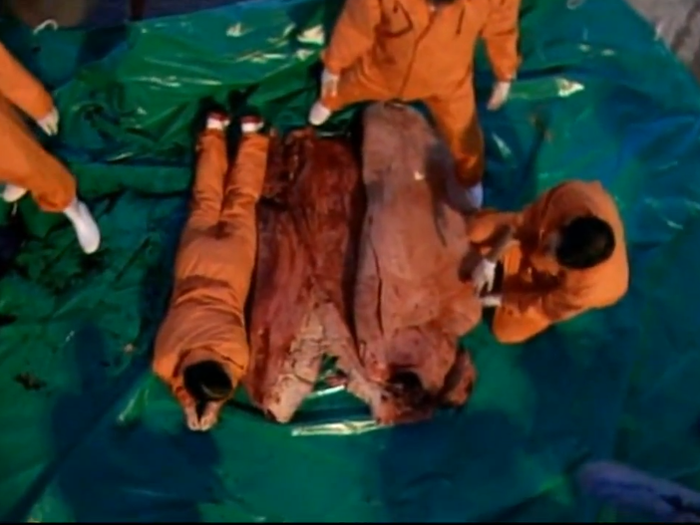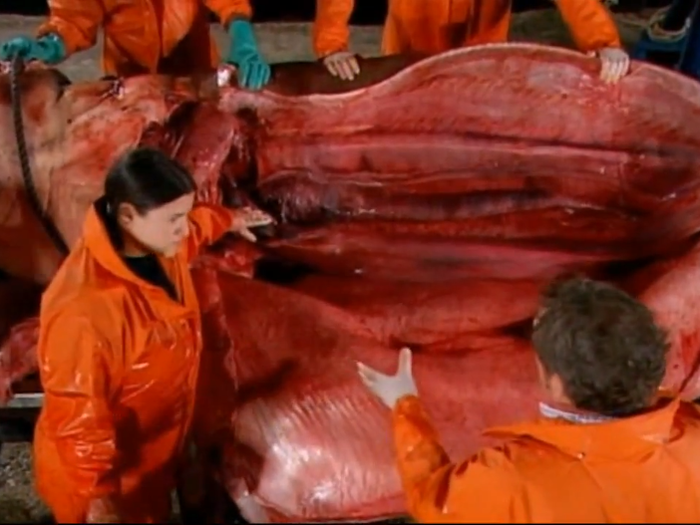This is what the inside of a great white shark looks like
South Africa's Mossel Bay is a popular tourist spot known for its dense population of great whites. In 2010, a massive great white was caught in a beach net designed to protect humans. The female 12-year-old shark weighed nearly 2,000 pounds and was 15 feet long.

The first thing you'll notice is the stomach in the shark's mouth. Scientists aren't sure why this happened, but they think the shark may have vomited out its own stomach in the panic of being trapped in a net.
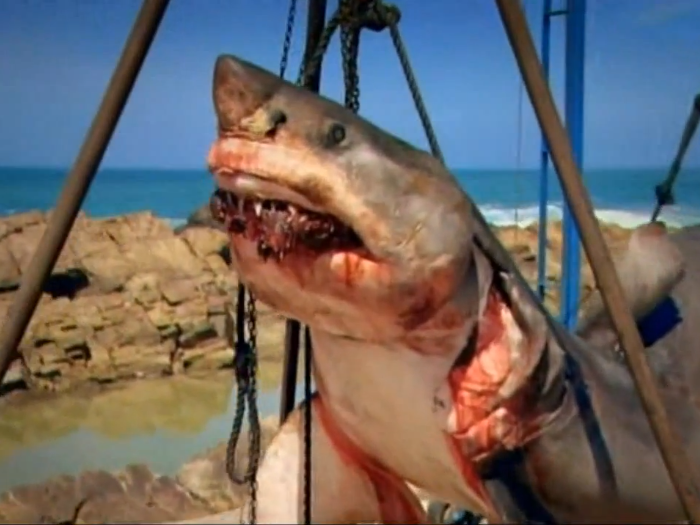
The shark is lowered down onto the dissection table and the first cut is made. The skin of the shark is like slicing through sand paper.
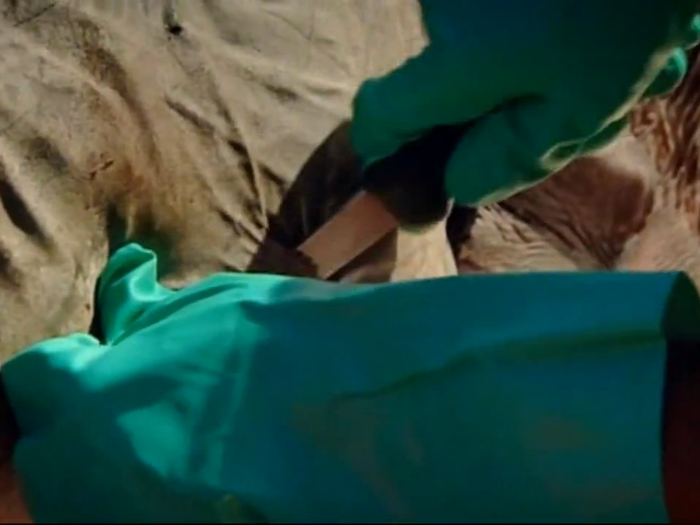
A shark's skin is rough because it is covered with tiny teeth, which are the same as the big teeth that sharks use to eat with. From an evolutionary standpoint, the micro-teeth of a shark's skin became the teeth in their mouth.
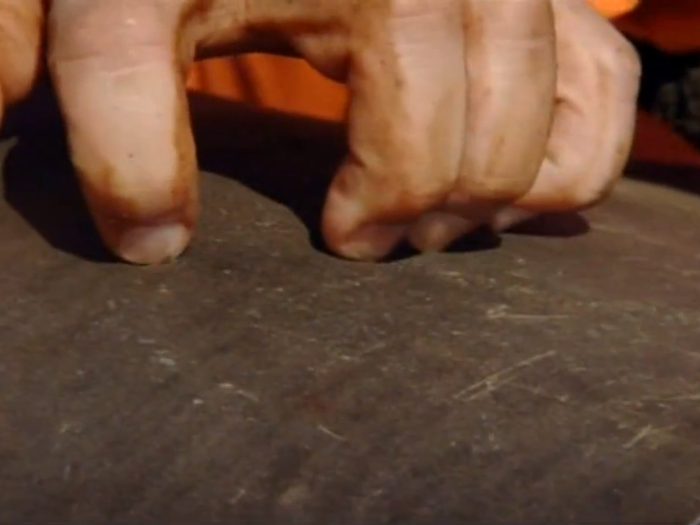
Interestingly, while the shark's teeth are very sharp, they are also quite wobbly and can be pushed in with the touch of a finger.
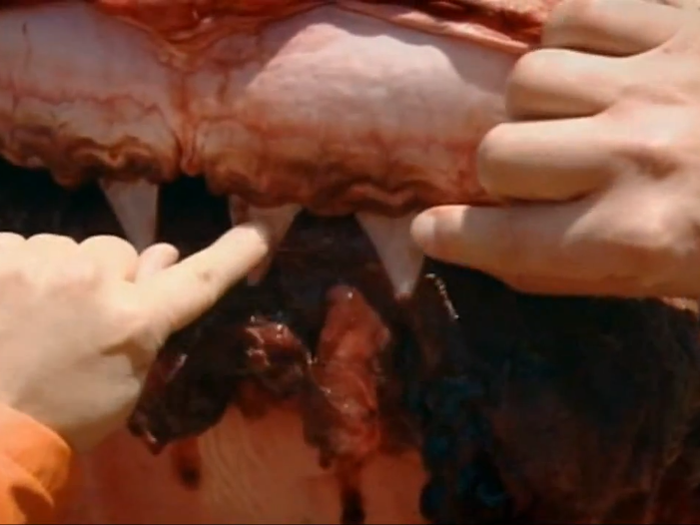
Sharks continuously shed their teeth, which are arranged in rows. The first row of teeth are functional and the rows behind that act as "spares." As the rows fall out, they are replaced by a new set.
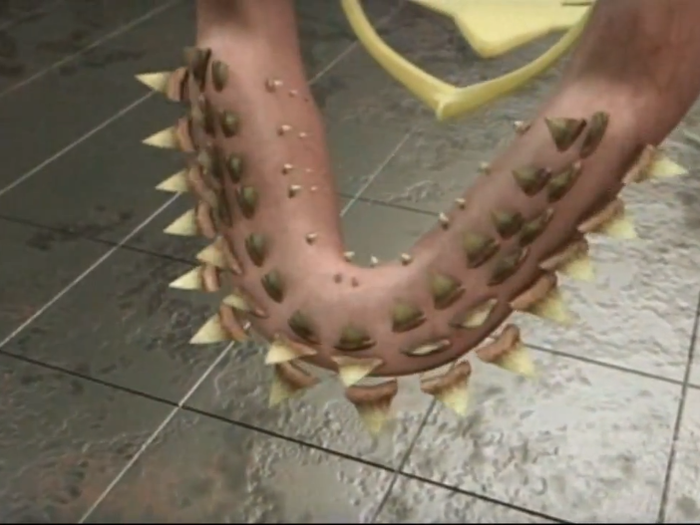
The shark's huge jaw muscles deliver a relatively weak bite. That's because the jaw isn't attached to the skull.
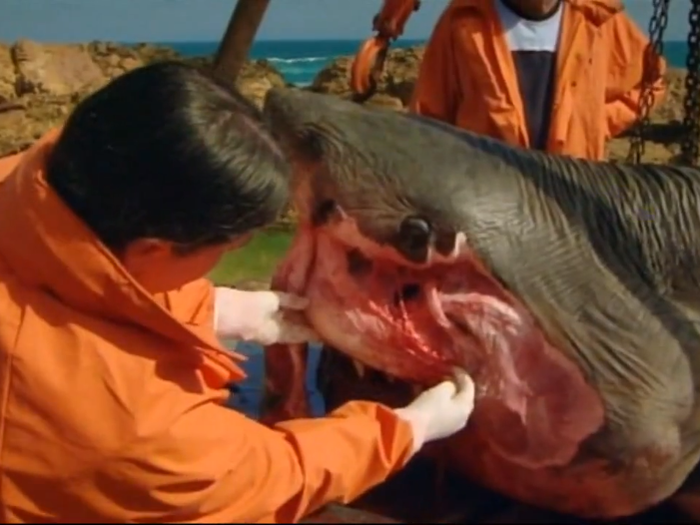
Because of this, when a shark opens its mouth the jaw can be thrown forward, enlarging the size of its bite. This helps the shark take huge chunks out of their prey.
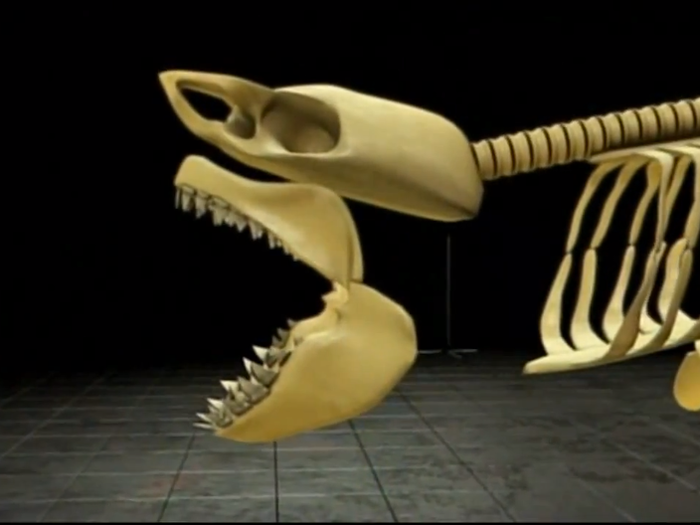
But great whites rarely attack humans. And when they do, most people survive. That's because the first bite is usually a weak "exploratory bite." When the shark realizes it doesn't like the taste, they don't come back.
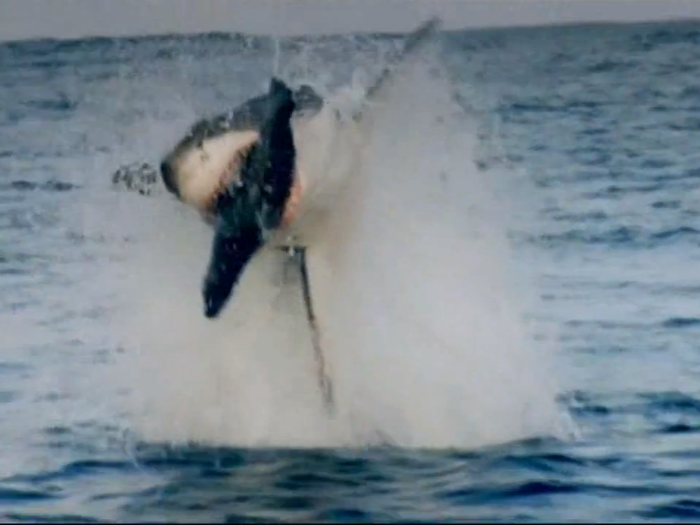
Here are the shark's gills. In order for sharks to breathe, water must flow through its gills, where oxygen exchange occurs. If a shark stops swimming, preventing water from moving through its gills, it will suffocate and die.
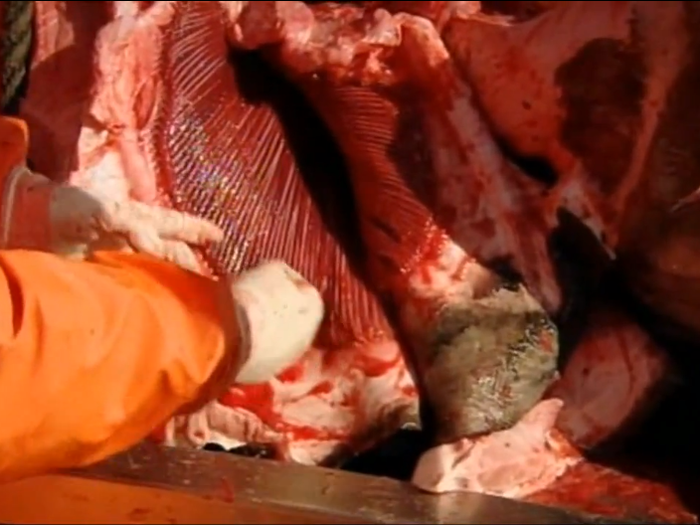
Sharks never close their eyes except for the moment they strike their prey. The eye socket rolls back as a form of protection during the attack. A great white shark never blinks because it has no eyelid.
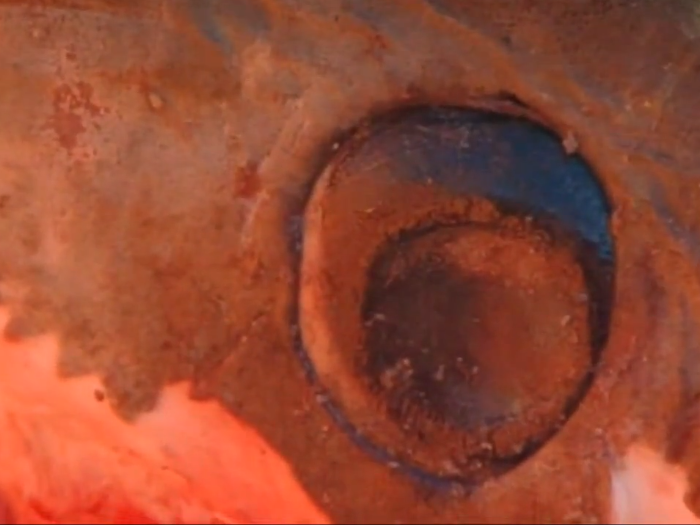
Slicing through the eye is also very difficult. This is another layer of defense designed to protect the shark in an attack.
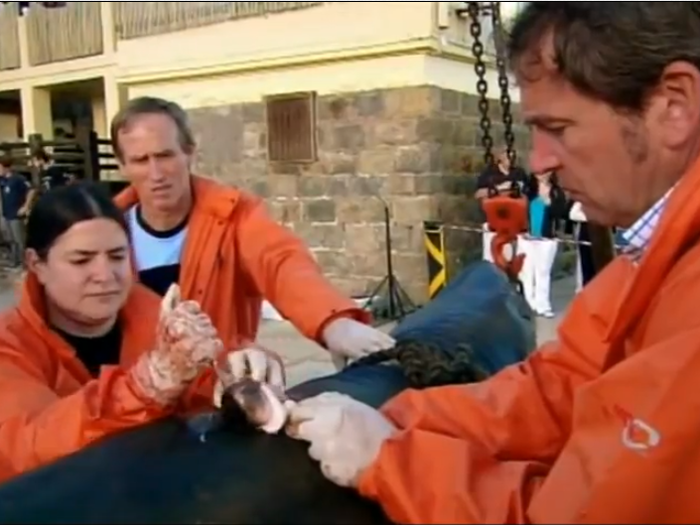
A shark's nostrils has two holes to the let water in and out. The nose is adapted to pick up small particles, especially blood.
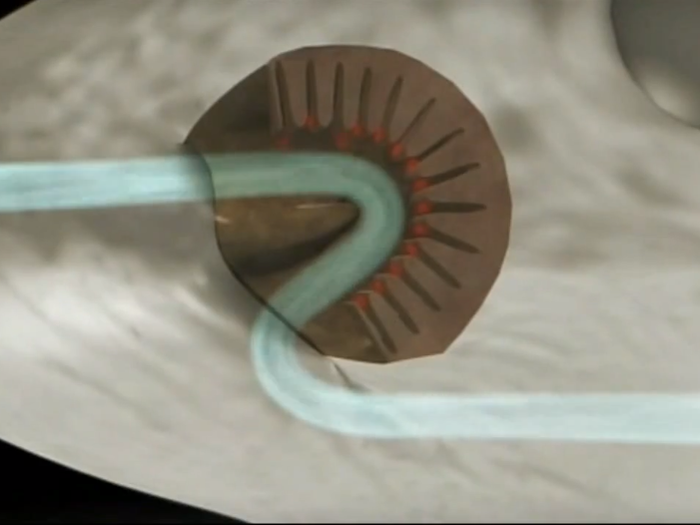
Because their hearing isn't great at pinpointing the direction a sound comes from, sharks have a special sensory system called the lateral line, shown here. The sensory organ can detect vibrations in the water and sends these signals to the brain.
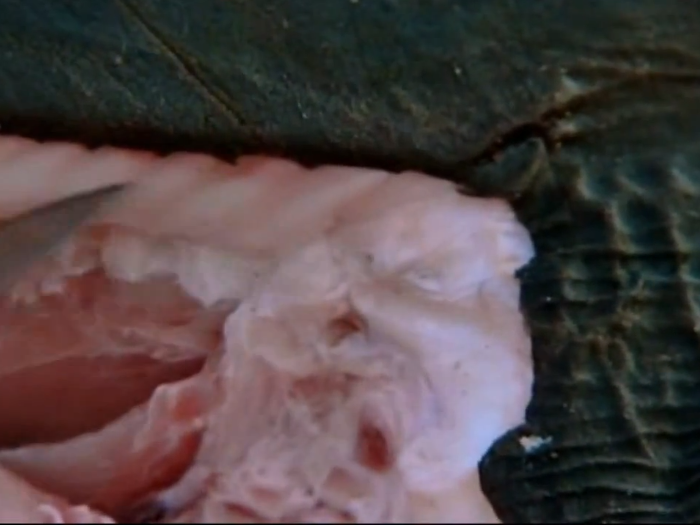
Unlike other fish, sharks lack gas-filled swim bladders that control buoyancy. Instead, they rely on a giant liver packed with oil to keep them afloat. Sharks will sink if they stop swimming.
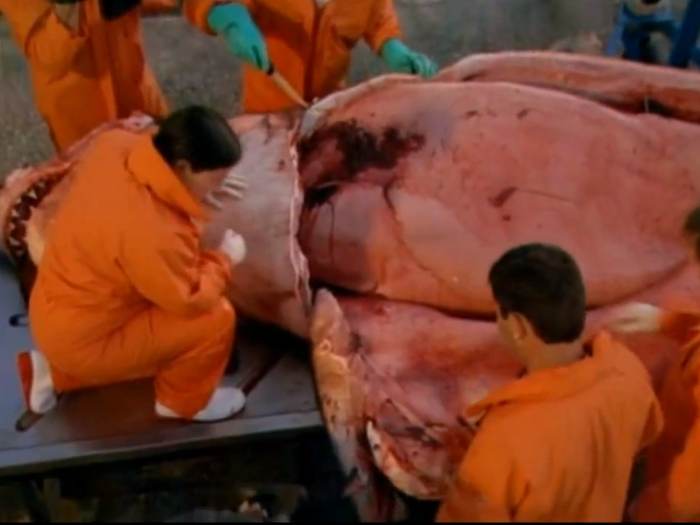
This is the shark's intestine. It isn't coiled like you would find in a mammal.
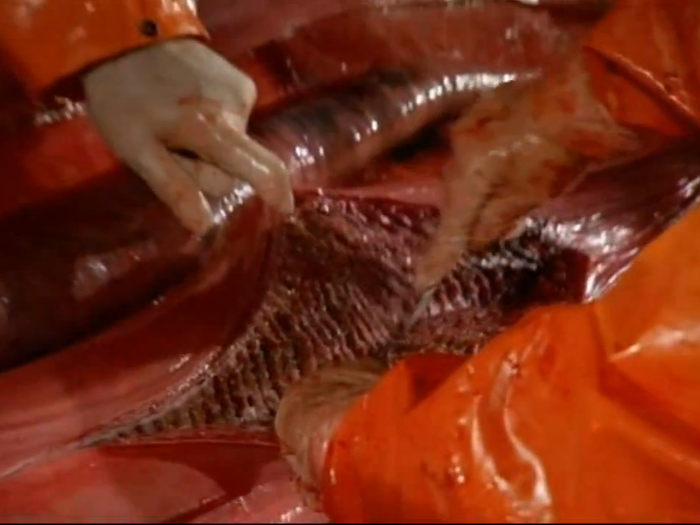
Unlike humans and most other vertebrates, sharks don't have any bones; it's all cartilage. This unique quality is what gives them lightness and flexibility in the water, while enabling them to become the largest fish in the sea. Shown here is the whale shark, which can weigh up to 20 tons.
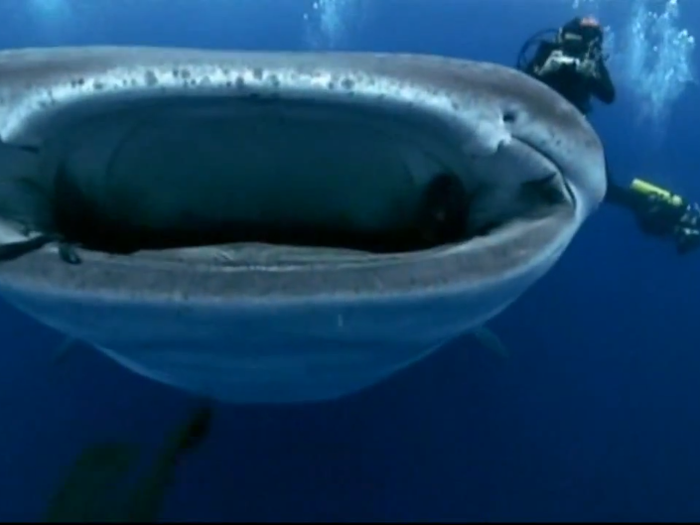
Nearly 90% of the tail is muscle. The red muscle is used for sustained swimming; The white muscle is used for sudden bursts of energy like during a sudden attack.
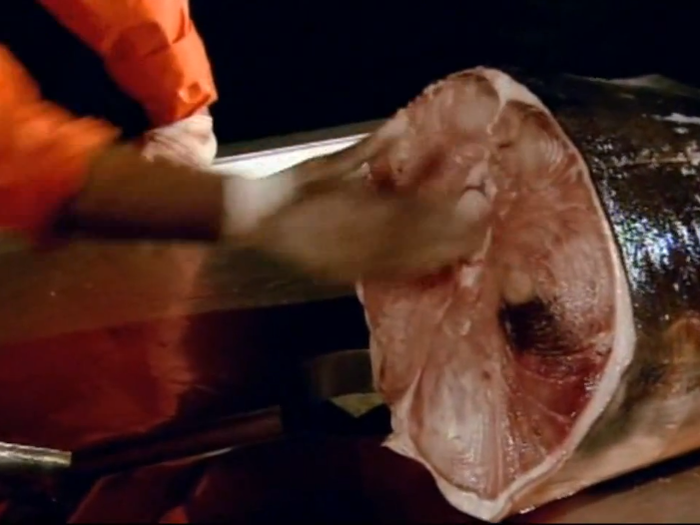
Finally, scientists get to the computer that controls all of these senses: the brain. It's held within a cartilage cranium. In order to reach it, you have to take the entire head off.
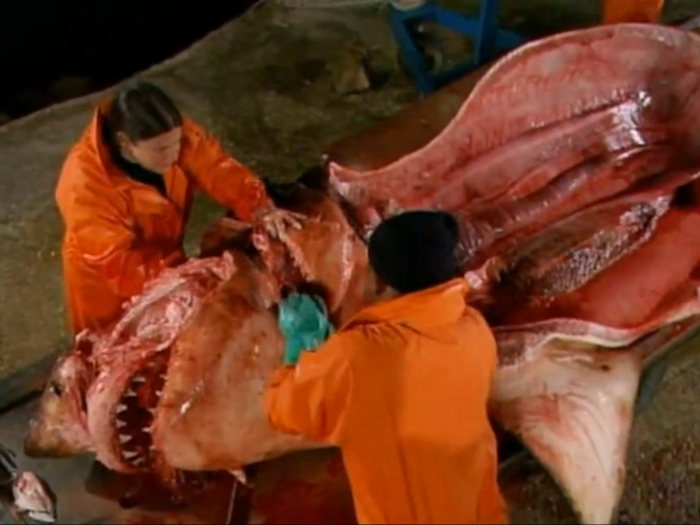
This is the cavity where the brain sits. It's small, but extremely specialized in order to process lots of sensory information. All of these senses are what makes the Great White a super predator.
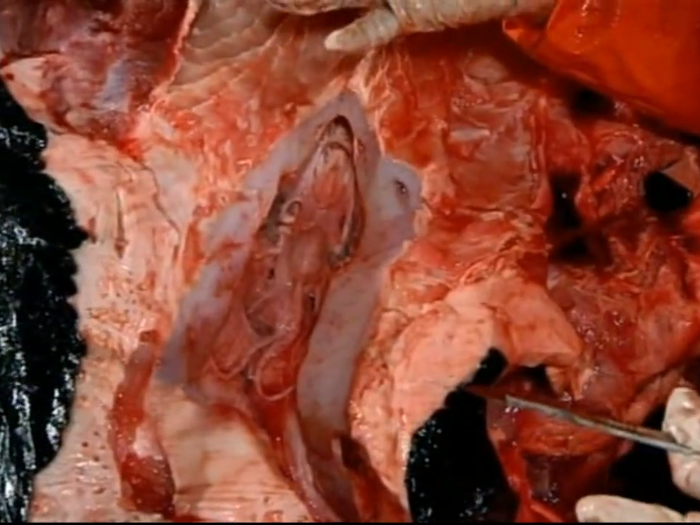
Popular Right Now
Advertisement
